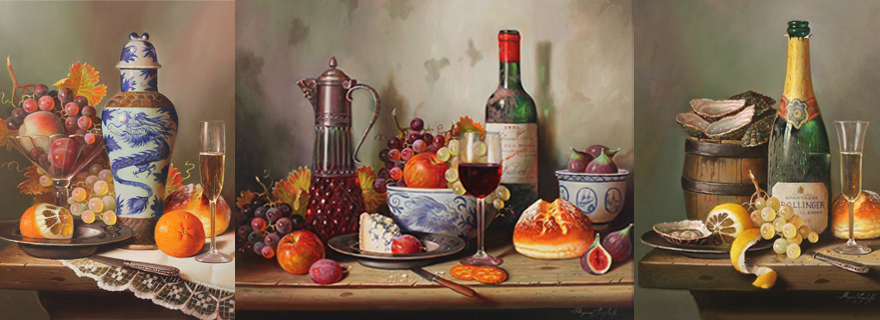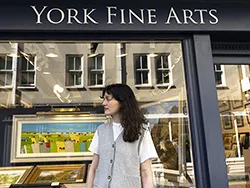

The Secrets of Still Lifes
by Deanna Dawkins / Friday 29th of January, 2016
It is easy to view a still life painting and take it at only face value, as many of the subjects are often familiar objects. After all, flowers, fruit or glassware are hardly foreign to most people. These objects are often a part of our daily lives, potentially misleading us to view them as mundane or ordinary. However, when considering a still life painting, there is often another level of meaning to explore, if one so desires and simply knows where to look.
The significance and symbolism found within still life paintings is deeply rooted in Dutch and Flemish history. In the 16th and 17th century, the Dutch and Flemish found themselves in an increasingly capitalist and firmly protestant society. Proud of their wealth and the hard work that had achieved it, many commissioned still life paintings, which had become a fashionable replacement for religious art. In and of themselves expensive commodities, the still life painting became a platform on which people could showcase their bounty and personal tastes. These paintings, often depicting opulent banquet or breakfast tables overflowing with rich, indulgent foods, served on the finest serveware amongst luxurious furnishings, communicated a firm statement of wealth and status that was perhaps anything but subtle.
But this abundance of luxury understandably prompted philosophical thinking about its morality and purpose in the greater scheme of life and death. As a response to the extravagant breakfast and banquet still life paintings, many artists chose to include symbolic objects as reminders of the vanity and brevity of earthly pleasures and ultimately, the inevitability of death. In these vanitas paintings, a single wilting flower, a plate of decaying food or perhaps the more obvious skull all served as prompts for the viewer to consider his or her own morality and mortality.
Whether by direct intention or simply as an homage to the classic Dutch and Flemish still life traditions of the past, the fact remains that many of these symbolic objects are still found in still life paintings today. For many people, the obvious beauty of a still life painting is enough to satisfy; but for those who are curious to potentially unveil a deeper meaning, consider some of these common symbolic objects:
-
Clocks and snuffed out candles: These serve as reminders of the brevity of life and are representations of the passing of time.
-
Skull: Perhaps the most obvious, the skull is a reminder of mortality and death.
-
Lemons: Beautiful, but bitter within, lemons can sometimes represent the deception of earthly beauty.
-
Ripe fruit and decaying fruit: While ripe fruit can establish riches, bounty and opulence, decaying fruit draws attention to the passing of time and ultimate death of all organic matter.
-
Oysters: Oysters, with a long reputation as aphrodisiacs, can represent indulgence or sensuality.
-
Bread: Bread can hold religious connotations and therefore serve as a reminder of morality. On a more fundamental level, it can also be a reference to basic nourishment, adding a grounded element to a scene.
-
Chinese porcelain: Foreign objects can serve as evidence of imported, expensive possessions, further establishing wealth.
You can view the gallery's collection of still life paintings, including paintings by Raymond Campbell and Paul Wilson, online here.
Further News and Articles


Annie Luke Turner Wins Women in Art Prize
Contemproary artist Annie Luke Turner wins in the Abstract Art category.
Sean Durkin: Art For All! 2025
Proudly announcing our fourth annual solo show by British contemporary artist Sean Durkin.

Meet the Artist Event: Clare Haley
An exciting opportunity to meet Yorkshire artist Clare Haley.
York Fine Arts Celebrates 10 Years of Yorkshire Artist Clare Haley
York Fine Arts unveils its 10th anniversary exhibititon of work by contemporary landscape artist Clare Haley.
Touring Dracula Exhibition to be Laid to Rest at York Fine Arts
Delve into an immersive exhibition, featuring ten original pencil illustrations by York artist and our own Senior Gallery Assistant, Kirsty Maclennan.

Five Fine Art Favourites: Spring 2025
As we burst forth into the spring ahead, we select five pieces from our collection that are currently brightening our days.